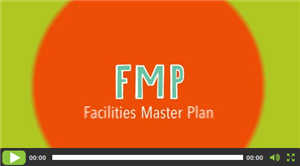FMP Outcomes Summary (2015)
-
SPPS STRATEGIC PLAN ALIGNMENT
This summary outlines the major outcomes and strategies of the Saint Paul Public Schools’ Facilities Master Plan (FMP) process undertaken in 2014-15. The planning process included the creation of three key guiding documents for making facility improvements over the next 10 years: Facility Vision, Principles and Standards (see links at right). These guiding documents are grounded in SPPS’ strategic goals:
- Achievement: School designs meet the evolving educational needs of students.
- Alignment: Funding, planning and processes are aligned to provide equitable access to facilities funding across the district.
- Sustainability: Coordinate facility projects to be more efficient and decrease costs.
The guiding documents also provided the underpinning for the development of work scope plans for SPPS’ 72 buildings. Among the many factors the FMP process takes into account is each building’s ability to house students in an environment that supports 21st century teaching and learning. Each building’s ability to accommodate educational programs was based on these factors:
- Physical quality and quantity of space to support program needs.Ability to meet the FMP Facility Standards.
- Program enrollment projections compared to aggregate capacities (the total capacity of a group of schools in a pathway and/or Area).
- Specific enrollment and capacity modeling for regional and district magnets.
As a result of this analysis, the following outcomes and strategies were developed to meet the learning needs of students both in the immediate and long-term future. Pending funding, these outcomes and strategies will be implemented based on the facility criteria reviewed by the Board of Education on Nov. 17, 2015.
FMP GOVERNANCE: THE FMP AS A LIVING DOCUMENTOn December 15, 2015, the Board of Education (BOE) approved the governance structure for prioritizing capital and facility improvement projects. Through the Facility Master Plan Committee (FMP-C) there will be an annual review and updates to a rolling, five-year plan that will take into consideration emerging factors that may impact proposed site remodeling projects such as:- Enrollment projections
- Demographic changes
- Educational pathway/program realignment or changes
- Technology advances
- Changes to federal or state law impacting capital funding, etc.
In this sense, the FMP is a living document that will continue to evolve as it responds to these various considerations, among others. To this end, the FMP-C will be responsible for prioritizing facility capital and improvement projects based on the approved Board of Education facility criteria; synthesizing new and emerging district strategic direction with the FMP; and outlining how the consequences of a new strategic direction may impact facility needs.
FMP OUTCOMES
1. Overall FMP OutcomesFacility improvements are outlined for each of SPPS’ 72 facilities that address deficiencies identified by the 2015 Facility Alignment Analysis (FAA). The FAA analysis was based on each site’s alignment with the 47 facility Standards and the site priorities identified by school communities (spring 2015). The facility Standards address items such as the flexibility and adaptability of spaces, welcoming entries, and a variety of spaces in each facility to support diverse teaching and learning modes.
The facility improvement plans for each site has been outlined in ‘work scopes’ which total 550+ pages of plans. These work scopes are project-based and allow an efficient use of funds to comprehensively address capital and maintenance construction work. With the full implementation of the FMP (pending funding) this would mean:- All buildings would undergo changes to improve alignment with facility Standards.
- Significant additions would be made to 11 buildings.
- Core spaces (gyms/cafeterias) would be aligned to program needs and capacity at approximately one third of buildings.
- Increased enrollment capacity so demographic projections, class size ratios and programmatic needs are aligned.
- Emphasis would be on creating additional prekindergarten classrooms, almost doubling the current number of classrooms.
2. Alignment with Academic Programming
Certain school programs were reviewed on the implication of possible growth of their academic programming. Based on data and community input, the following decisions were made:- Adams Spanish Immersion’s (K-5) student enrollment is currently at an appropriate threshold for its program and should remain at or near its current student count; however, because of the building’s small size, it is recommended that expansions to its space be made to best meet the learning needs of current students and to equitably align the square foot per student.
- Cherokee Heights (PreK-5) is currently considering transitioning from a community elementary program to a Montessori program. Though final decisions on this program change or possible timeline have not been made, a major change in the academic program would require significant physical changes to the building and grounds to meet the needs of the Montessori educational model.
- Farnsworth Aerospace (PreK-8) is a dual campus (PreK-4 and 5-8) specializing in aerospace and engineering. Students who are best served by Farnsworth’s middle grades are those students who have transitioned from its lower campus (PK-4) and have received the aerospace background to succeed in the upper grades (6-8). Therefore, expanding Farnsworth’s middle grades program to accommodate the district’s overall middle school growth is not recommended.
- Jie Ming Mandarin Immersion (currently K-4), which is co-located with Hamline Elementary, will add its final grade level (5th grade) in 2016-17. As its program continues to grow, it will increasingly be in need of dedicated space. Based on demographic data and programmatic expectations for that growth, it is expected that within 10 years the program will have four sections of kindergarten and subsequent student attrition in upper grades if it follows the same historical pattern of other SPPS language immersion schools, e.g., as students advance grades, four kindergarten sections will result in two sections of fifth grade. Ideally, the program would also have four sections of prekindergarten. At this time, no decisions have been made on where to locate this program (see more details below on Hamline Elementary) or what building supports will need to be in place at that location.
- Linwood Monroe Arts+ (PreK-8), a dual elementary campus, will make shifts to better align its grade configurations with other SPPS schools. The prekindergarten and 4th grade will move from the upper campus (currently houses PreK and grades 4-8) to the lower campus (currently houses K-3) so that the lower campus will eventually house grades PreK-4 and the upper campus grades 5-8.
3. Near-term Capacity Strategies
OVER/NEARING CAPACITY: Certain schools are experiencing capacity issues in the immediate future due to high demand and enrollment growth. Enrollment at three elementary schools in kindergarten and grade 1 has grown and will surpass each building’s capacity as students advance into the upper grades. As these students are already present at these schools, the need for additional space is immediate. Expansion of the school buildings will be considered where the demand is anticipated to be maintained over time; where the site can handle expansion; and where there is efficiency in growth and operation. These schools include:- Highland Park Elementary (K-5)
- Horace Mann Elementary (K-5)
- St. Anthony Park Elementary (K-5)
- Como Senior (9-12)
- Humboldt Secondary (9-12)
AT OR OVERCAPACITY: Grades 6-8; Area A. Most middle schools are at or over capacity. Options include building a new middle school or converting an elementary school to a middle school, which may also require the construction of a new elementary school. The schedule for finalizing this decision is as follows:
- 2015-16: Internally assessing academic outcomes of all options
- 2016: Public discussion of all viable options
- 2019: Solution will be in place
UNDER CAPACITY: Galtier, and Hamline. Galtier (PreK-5) and Hamline (K-5) cannot fill enrollment based on current programming and projections. Jie Ming (K-4), which is co-located with Hamline Elementary has been adding grades as part of its planned program expansion since being founded in 2011. As a result, by 2017-18 Jie Ming and Hamline are expected to be unable to fit in the same building. The Office of Family Engagement is currently leading the conversation with parent groups to determine the best solution for accommodating this situation. A decision is expected for all three programs in 2016.
4. Long-Term Growth Strategies
The following schools, grades or sites are anticipated to have enrollment growth in the future based on factors unique to each case.
CREATIVE AND PERFORMING ARTS SCHOOLS: SPPS’ arts programs have maintained popularity among families, draw students from across the city, and their buildings have the capacity to add students. These schools are Mississippi Creative Arts School (PreK-5), Four Seasons A+ Elementary (PreK-5), St. Paul Music Academy (PreK-5), Linwood-Monroe Arts Lower and Upper campuses (K-4, 5-8) and Creative Arts Secondary (6-12).
PRE-KINDERGARTEN EXPANSION/GROWTH: Based on its vital educational benefits, programmatic growth is anticipated in prekindergarten. Proposals in 2015 by the Minnesota Legislature have also presented possible state action to fund full-day PreK (universal PreK) in the future. For SPPS, the lack of funding and adequate facilities are factors limiting the addition of PreK programs currently.
To accommodate this anticipated PreK growth, the FMP should keep in step by expanding SPPS’ number of PreK classrooms. This expansion should also support efficient PreK programming, for example, providing at least 2 to 4 rooms per location. While expansion is not critical in the very near term, planning for an increase in the pace of growth should anticipate potential legislative action.
Two buildings currently have the capacity to accommodate PreK classrooms and are suitably located to become PreK/Early Learning Hubs:- Highwood Hills (PreK-5)
- Barack and Michelle Obama (PreK-5)
Under the current FMP options and assuming all-day kindergarten, by 2026 SPPS would at best have the space for 50 percent of the 4 year-olds living in Saint Paul. Should universal PreK be legislated and funded, SPPS would work with private organizations to provide services and learning spaces.
5. Cost-saving StrategiesADMINISTRATIVE SPACE: Plans are to vacate all leased space used for professional staff; specifically, to:- Reduce overall non-school areas by approximately 40,000 square feet.
- Reduce the lease levy by $394,000 annually which will in turn provide payback on any costs necessary to accommodate additional staff in existing SPPS spaces.
- Increase efficiency of existing operations such as reducing the footprint of the Nutrition Center by a third while enhancing food preparation capacity and improving operation logistics.
DISPOSAL OF BUILDING SITE: 900 ALBION AVE.Due to its location and small size, the building located 900 Albion Ave. provides no value to SPPS. The current building is small and has the highest Facility Condition Index (FCI) in the district. For this site to be viable, it would require that the building be replaced. Because the site itself is small (5.4 acres) and triangular in shape, it holds no long-term value to SPPS.
SCHOOL BUILDING CONCEPTUAL WORK SCOPES
With the data gathered and guiding documents in place, the FMP will be a living document that evolves from year-to-year as it adapts to changing forces both internal and external to SPPS. Links to schools' conceptual facility work scopes are available for review. - Achievement: School designs meet the evolving educational needs of students.
FMP Guiding Documents
-
See the Facility Vision, Principles and 47 Standards developed by the FMP Committee that provide the underpinning to the criteria SPPS will use to prioritize facility improvement decisions.






